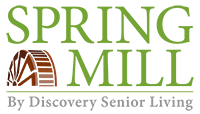The golden age is a time of life when one has finally embraced the possibility of slowing down and savoring each moment. Health matters take a central stage, with one concern being breast cancer. Awareness of breast cancer in seniors is critical. Early detection goes a long way in helping manage the illness and improving the quality of life.
In our retirement community, we cultivate a positive environment. We recognize that shared experiences and wisdom make up our community. We oversee discussions on health subjects that include senior living and breast cancer. This promotes a sense of collective responsibility.
Pay Attention to Any Lump or Thickening
Detecting any lump, large or small, in the underarm or breast could indicate breast cancer. Not all lumps are cancerous, but every lump needs medical attention. Frequent self-exams can aid in noticing any abnormal growths or changes at an early stage.
Regular mammograms are beneficial for early detection. Golden-age adults should work closely with healthcare providers for appropriate and regular screenings. The active involvement of family members and the retirement community team in supporting these regular check-ups could be very helpful.
Check for Skin Changes
Not all signs of breast cancer can be felt. Skin changes in the breast, such as redness, rashes, or dimpling, can be indicators. Even small changes like changes in the size or shape of the breast can potentially be signs of breast cancer.
Remember, persistent changes are what matters. Temporary redness or rashes that subside don’t usually suggest breast cancer. However, any constant skin change, itching, or swelling should promptly warrant a consultation with medical professionals.
Examine for Nipple Changes
Nipple changes, such as inversion or retraction, are often early signs of breast cancer. It’s normal for nipples to invert due to changes in temperature or arousal occasionally; however, if they look permanently pulled in or different from usual, it could signal breast cancer.
Women in their golden age should check for changes not only in the position of the nipple but also for any unexplained itching, burning, or soreness. By regularly examining, you’re conscious of breast health and prepared for an early reaction if necessary.
Beware of Nipple Discharge
While nipple discharge can be a natural response to breast manipulation for some women, it could also be a sign of breast cancer. Yellow-green or bloody nipple discharge should be viewed with seriousness, especially if it’s occurring without squeezing the breast.
Remember, it’s about catching unexplained changes early. The odd daily variations aren’t necessarily a concern, whereas persistent discharge can be. Engaging with your medical professional at the early onset of these symptoms is a wise step. This will ensure you get the appropriate care and support from the community if necessary.
How Can Our Retirement Community Make a Difference?
We promote open, nurturing dialogue within our community. Understanding the signs of breast cancer can prompt early consultations and action. This can mean the difference between life and death. It’s a shared effort that contributes to the safety and well-being of our loved ones.
In our retirement community, we are not just residents and team members; we are family. Join hands in recognizing the signs of breast cancer in golden-age adults. Together, we commit to enhancing the quality of life for our loved ones.







